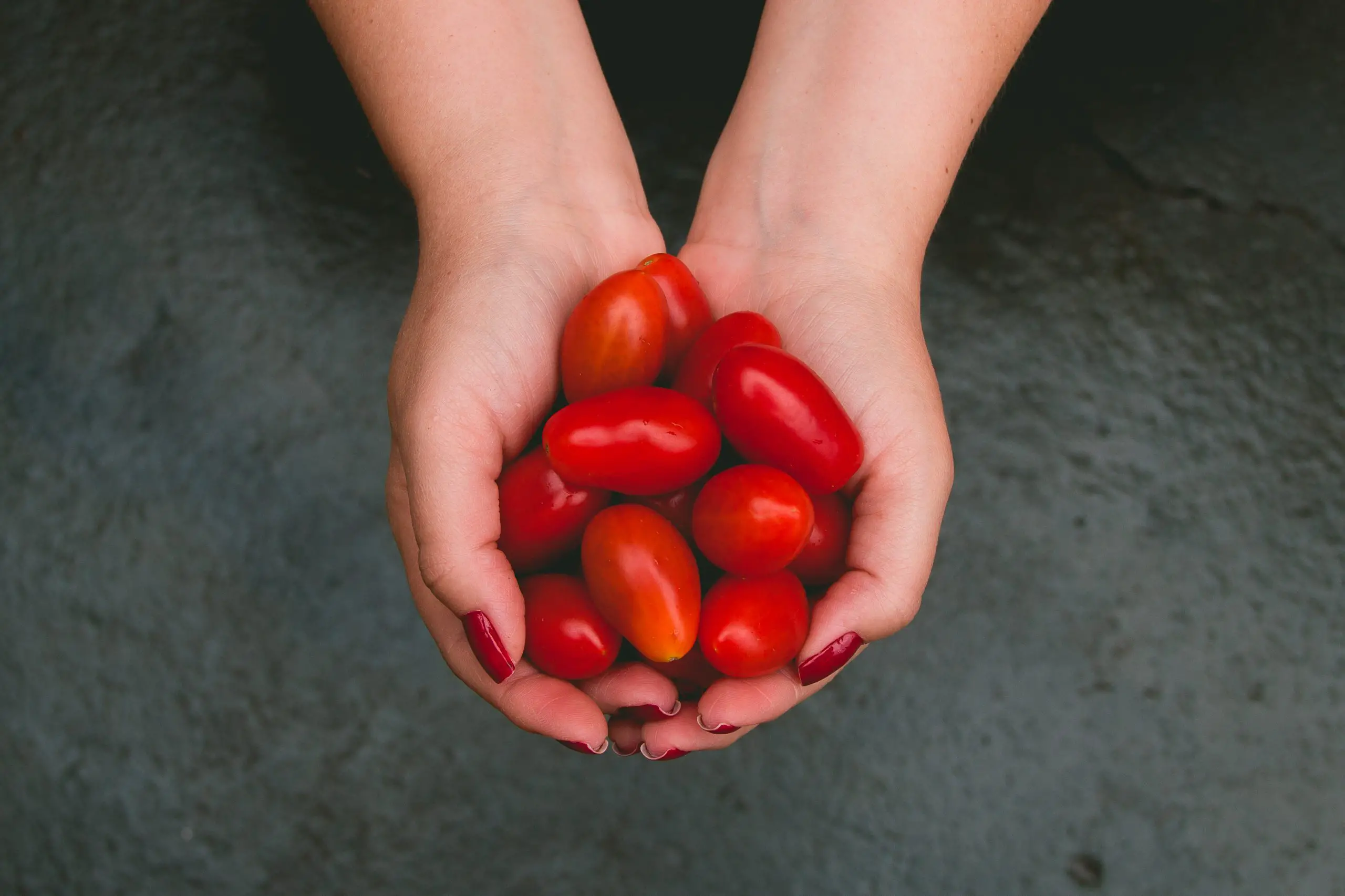Whether you’re a tomato lover or want to save money by preserving fresh vegetables, you may want to know how long tomatoes last in the freezer, which tomatoes are good for freezing, and how to freeze tomatoes. Freezing whole tomatoes is a quick and simple way to preserve fresh tomatoes.
If you have ever wondered how long tomatoes will stay fresh in the freezer, then in this article, you will get all the information related to tomatoes, and you will also know how many tomatoes we can eat daily and how beneficial tomatoes are for us. So let’s start.

How Long will Tomatoes Last in the Freezer?
To ensure proper freezing, ensure the freezer is kept at 0°F or less. For a whole year, tomatoes that have been frozen will retain their flavor. This allows you plenty of time to thaw them before using them in your preferred sauce, stew, or soup recipes. When ready, utilize your frozen tomatoes for various amazing tomato sauce meals, such as soups and stews.
Only in time for the harvest the following year, bags of fresh tomatoes can last up to a year in your deep freezer! You can freeze raw, unblanched tomatoes for up to two months. Blanched whole or diced tomatoes can be frozen for up to ten months. And just like that, you are better prepared than most people for winter dinners.
Fresh tomatoes were tested in an active micro corrugated cardboard tray container designed to improve the shelf life of fresh tomatoes using biodegradable materials. The cardboard tray’s inside surface was coated with polylactic acid (PLA; 3% w/v), and after being filled with tomatoes, the tray was covered with a low-density polyethylene film of 70 or 20 m thickness and hermetically heated to create the dynamic packaging characteristics.
Reference: Active Packaging of Cardboard to Extend the Shelf Life of Tomatoes.
What Tomatoes are Best for Freezing?
Any tomato variety can be frozen, but Roma tomatoes, often known as plum tomatoes, are the best. They are freezer-friendly since they contain the most pulp. Roma and other paste tomatoes typically maintain their shape when frozen. Sliced tomatoes are best used in soups and sauces since, like beefsteak, they tend to change texture when frozen. Whatever recipe asks for stewed tomatoes will work just fine!
How do you Freeze Tomatoes?
A simple method for preserving juicy, ripe, and fresh tomatoes is to freeze them. If you follow a few rules and are aware of how to use tomatoes that have been frozen, the freezer is the unassuming secret to the simplest long-term preservation of whole in-season tomatoes. You can easily preserve tomatoes by following this step-by-step instruction.
Clean the Tomatoes: After washing, pat the tomatoes dry. On a huge baking sheet, arrange tomatoes that are ideally ripe, spotless, de-stemmed, cleaned, and dried.
Peel the tomatoes: Place them on a level work surface and use a slotted spoon to remove them from the ice water. The tomatoes should be free of any green stems. To remove the woody core from the top of each tomato, use a paring knife. Tomatoes will peel easily. Because you’ve already scored them, the tomato skins will come off easily. Abandon them.
The Tomatoes in Bags: Put the tomatoes in a gallon-sized zip-top freezer bag. Close the lid tightly after taking out as much air as possible from the bag. Whole, stewed, or unflavored tomato sauce can all be frozen. Both options are Mason jars with straight sides or tight-fitting plastic food storage containers.
Straight sides are required for the jars. Use only jars that are straight at the top and without shoulders. When tomatoes are frozen, their water content swells, which puts pressure on the jar and causes it to break. For this reason, it is important to leave an inch of headspace in the jars rather than filling them to the top.
Keep the Tomatoes Frozen: Lay the bag flat in the freezer and let it stay there until it is completely solid, ideally overnight but at least for six hours. As long as six months, keep it frozen.
Do Tomatoes Need to be Blanched Before Freezing?
Blanching is swiftly cooking whole tomatoes in a huge pot of boiling water before quickly cooling them off in an ice bath. By doing this, the enzymes in the tomatoes are prevented from degrading them and changing their texture after being frozen.
How do you Thaw Frozen Tomatoes?
Frozen tomatoes can be kept in the freezer for up to six months if stored in an airtight container or freezer bag. As you require them, remove the frozen tomatoes from their freezer bag. It should be melted in a bowl at room temperature.
Add frozen tomatoes with the skins directly to your soups, stews, or other whole tomato dishes. Or submerge frozen tomatoes in a warm stream of water. The skins will be separated and released. Remove the skins and use them as you choose. Remove the skins and use them as you choose.
Can you Eat Tomatoes Every Day?
If you consume tomatoes daily, you can obtain a lot of vitamins and minerals. But even if you eat tomatoes sometimes, you’ll still benefit from them. It would be best if you guided the recommended daily intake of tomatoes.
The healthiest way to consume tomatoes is by far raw consumption. It’s difficult to beat that fresh-from-the-garden, raw tomato taste, whether you eat them as a quick snack, add them to a light salad, or slice them up and place them on a sandwich.
How does a Straw Release Air from Freezer Bags?
Place a straw in the bag’s corner. Start sealing the bag from the opposite end while releasing some air. Suck out the air as you get closer to the spot where the straw is. After that, swiftly remove the straw and seal the ziplock bag entirely.
How to Store Tomato Puree in Freeze?
Using tomato puree before freezing can help preserve the flavor and texture of your tomato dish. It can be used in place of canned tomatoes in many recipes. It can also be stored in an airtight container in the freezer for up to six months.
You can store tomato puree in a jar, plastic container, or freezer bag. Be sure to label and seal your bags properly. It would be best to store it in a cool, dark place. Some recipes don’t require you to defrost tomato puree before using it.
You can freeze tomato puree using ice cube trays. You’ll want to keep the ice cubes in freezer bags. You can freeze individual tomatoes to prevent them from freezing. This process may take a few hours to complete. You may need to add extra time to defrost the tomato puree. You can also use a food mill to remove the seeds and skins from the tomato puree.
How do you Use Whole, Frozen Tomatoes?
Take the necessary number of tomatoes out of the Ziploc bag. Before putting the bag back in the freezer, firmly reseal it using the straw technique. The tomato peel can be readily removed if desired by putting the frozen tomatoes in a pan of water. The skin will immediately peel off after a short while.
Making Salsa with Frozen Tomatoes
Using frozen tomatoes is a great way to get a salsa fix at a later date. They still have plenty of flavor for hot recipes. However, it would be best if you thawed the tomatoes first. When thawing, you can put the salsa in the microwave or in a saucepan on low heat to defrost.
You can also place the salsa in a freezer bag. You can also use canned tomatoes to make salsas. These are generally smaller than fresh tomatoes. They are also easy to freeze. They are not a good substitute for fresh salsa because they do not have the same texture. You can also use tomato paste to speed up the cooking process.
When making salsa with frozen tomatoes, you need to remove the skins. This is easy to do with a kitchen knife. Cut the tomato away from the stem. You should also remove the skins when you are picking up the tomatoes. Once you have removed the skins, place the tomatoes on a baking sheet.
Are Tomatoes Healthy for you?
Antioxidants, which are present in tomatoes in significant amounts, have been linked to several health advantages, including a decreased risk of cancer and heart disease. They are a healthy food to eat frequently because they are small in calories and fat and a fantastic source of potassium and vitamin C.
Lycopene, abundant in tomatoes, has many health benefits. In addition to giving them their vivid red color, it helps shield them from the sun’s UV rays. It can similarly aid in preventing damage to your cells. Potassium, vitamins B and E, and other minerals are also present in tomatoes.
Both carrots and tomatoes don’t contain a lot of sugar. This indicates that a serving’s natural sugar content is quite low. Like carrots, tomatoes are regarded as a non-starchy vegetable for meal planning for diabetes.
Conclusion
Freezing tomatoes is a great way to go if you want to add something to a chili or preserve tomatoes for use later in the winter. It’s as easy as harvesting, washing, and freezing. Freezing tomatoes preserves the flavor of the fruit. The freezer is a further, occasionally overlooked food preservation method, especially regarding tomatoes.
Freezing tomatoes is an excellent choice if you intend to use them in stews and sauces throughout the winter. Put them into freezer bags without puréeing or canning them first. Yes, in complete seriousness. It is a convenient yet effective method of preserving tomatoes.

